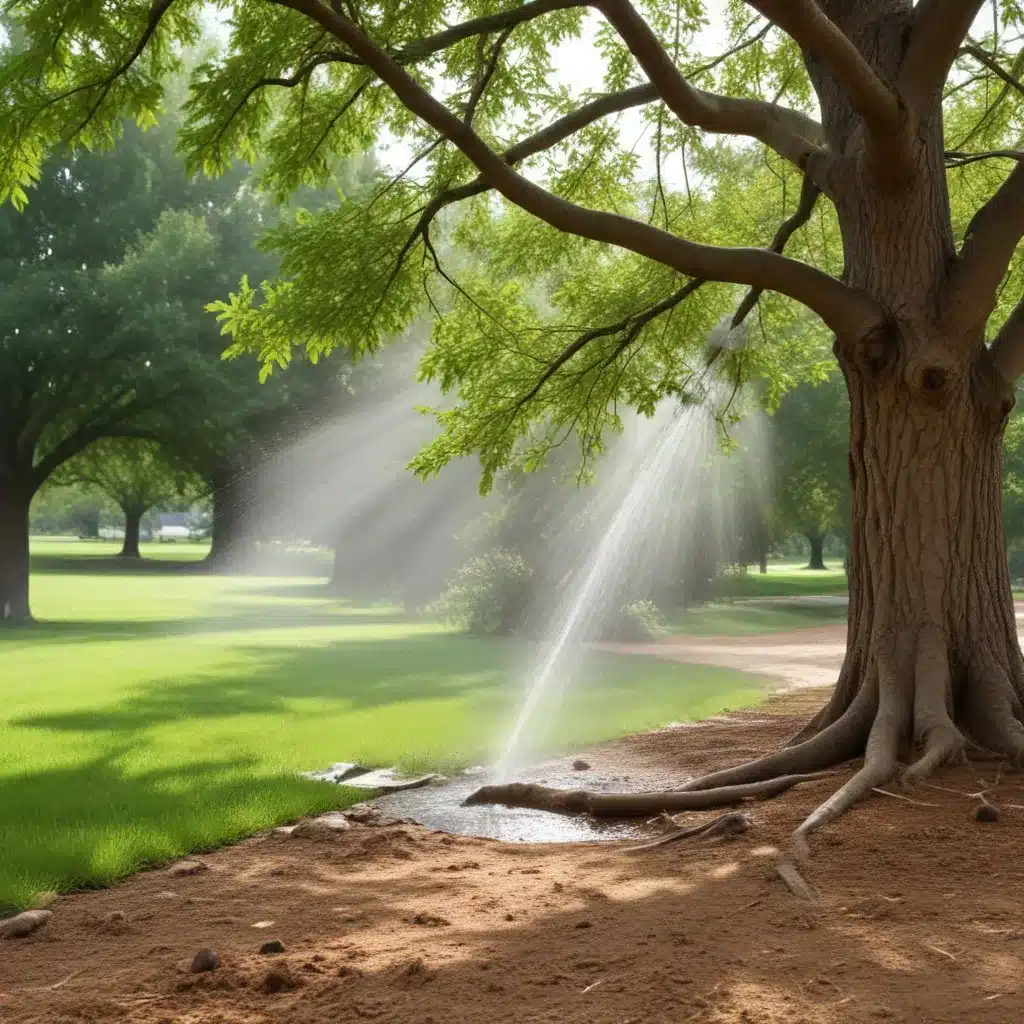
The health and longevity of trees are inextricably linked to their access to sufficient water. As tree care specialists at TriCounty Tree Care, we understand the vital role that proper watering plays in sustaining the vitality of our urban and suburban forests. In this comprehensive article, we will delve into the intricacies of tree watering, exploring the factors that influence water requirements, the benefits of adequate hydration, and the techniques for effectively monitoring and maintaining optimal soil moisture levels.
Watering Requirements for Trees
Trees, like all living organisms, have unique water needs that are shaped by a variety of factors. Species, age, soil composition, slope, and environmental conditions all contribute to the specific watering requirements of a given tree. Native and drought-resistant tree species, for instance, have adapted to conserve water and may require less attention compared to their non-native counterparts.
To determine the optimal watering regimen for a tree, it is essential to first identify the species and understand its inherent water needs. Observing the tree’s physical appearance can provide valuable clues, such as the presence of dead twigs, undersized leaves, or premature leaf discoloration – all of which may indicate drought stress. Additionally, probing the soil with a long screwdriver or similar tool can reveal the moisture content; if the soil is hard and dry, it’s a clear sign that the tree requires immediate watering.
Importance of Adequate Hydration
Providing trees with sufficient water is crucial for their overall health and resilience. Proper tree watering offers a multitude of benefits, including:
Improved Tree Health
Well-hydrated trees are better equipped to resist the onslaught of pests and diseases, as adequate moisture strengthens their natural defense mechanisms. Additionally, proper hydration enables trees to maintain essential biological processes, such as nutrient absorption and photosynthesis, which are vital for their growth and survival.
Enhanced Growth and Vigor
Adequate water supply supports the tree’s ability to produce new foliage, strengthen its structural integrity, and establish robust root systems. This, in turn, enhances the tree’s overall vigor and resilience, allowing it to thrive in the face of environmental stressors.
Conversely, the consequences of underwatering can be severe, leading to drought stress, reduced growth, and an increased susceptibility to pests and diseases. Ultimately, the health and longevity of a tree are inextricably linked to the availability of adequate hydration.
Seasonal Watering Considerations
The water requirements of trees fluctuate throughout the year, necessitating a dynamic approach to watering practices. During the spring and summer months, when trees are actively growing and transpiring, they typically require more frequent watering to meet their heightened water demands. Adjusting watering schedules to account for natural precipitation levels is crucial during this period.
In fall and winter, as trees enter a state of dormancy, their water needs decrease significantly. However, it is still essential to provide supplemental watering to ensure that the trees are adequately prepared for the upcoming dormant season and can withstand the potential stresses of cold and drought.
Watering Methods and Techniques
To ensure the efficient delivery of water to the tree’s root zone, various watering methods and techniques can be employed. Drip irrigation systems, for instance, offer a highly effective and water-efficient solution, as they slowly release water directly into the soil, minimizing evaporation and runoff.
For those relying on manual watering approaches, it is crucial to avoid common mistakes, such as sprinkler-based watering, which can result in water loss through evaporation and surface runoff. Instead, focus on deep, slow watering at the base of the tree, allowing the water to penetrate deeply into the soil and reach the root system where it is most needed.
Soil Moisture Monitoring
Effective tree watering requires a thorough understanding of the soil’s moisture content. Regular soil testing and analysis can provide valuable insights into the ideal moisture levels for a specific tree species and its growing environment. Additionally, the use of moisture sensors can help track real-time soil conditions, enabling homeowners and professionals to make informed decisions about watering schedules and quantities.
Proper Tree Planting and Establishment
The success of a tree’s water management is largely determined by the initial planting and establishment process. Careful site preparation and the creation of optimal soil conditions can ensure that the tree’s roots have the necessary resources to thrive, making it better equipped to withstand drought and other environmental stresses. Ongoing aftercare and monitoring are also crucial, as they allow for the adaptation of watering schedules to meet the tree’s evolving needs.
Identifying and Addressing Watering Issues
Vigilance is essential when it comes to tree watering. Recognizing the signs of over- or underwatering, such as wilting, leaf discoloration, or premature leaf drop, can help arborists and homeowners quickly identify and address any issues. By troubleshooting the underlying causes and implementing corrective measures, trees can be restored to a state of optimal health and resilience.
At TriCounty Tree Care, we are committed to providing our clients with the expertise and resources necessary to ensure the long-term vitality of their trees. Whether you’re a homeowner looking to enhance the health of your landscape or a property manager seeking to preserve the urban forest, our team of dedicated tree care specialists is here to guide you through the intricate process of proper tree watering and maintenance. Contact us today to learn more about our comprehensive services and how we can help you safeguard the future of your trees.


